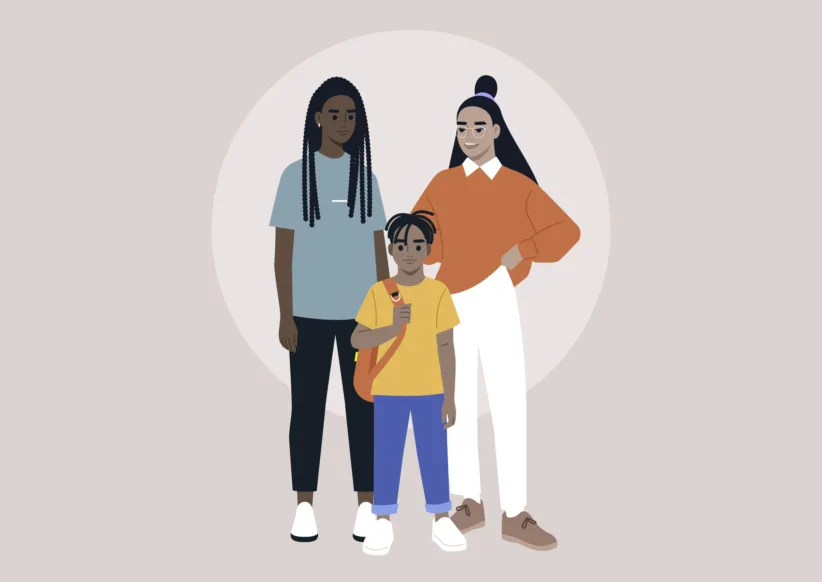Our bodies and brains work in mysterious ways. And even with cutting-edge medical, psychological, and scientific advances, there are still some things we can’t yet figure out or fully understand.
A “mystery” condition that has been around for a long time has become less mysterious thanks to groundbreaking research. Experts now know much more about nonverbal learning disability’s inner workings than they did 15 or 20 years ago, but valid recognition and an official diagnosis are still in the works.
Children, adolescents, and adults who struggle with nonverbal learning disability have to deal with challenging social and spatial difficulties. It affects the development of social skills, including the ability to form meaningful friendships, and may also affect some aspects of academic performance. In many kids and adults, the disability causes a dizzying range of baffling and seemingly odd behaviors and idiosyncrasies that progressively manifest across almost every facet of their being; in essence, taking over their lives and causing havoc inside and out.
“Nonverbal learning disability is a very complicated and poorly understood disability, and too many people are marginalized in life as a result,” said Dr. Laura Lemle, who founded the NVLD Project — which works to assist people who struggle with this multi-faceted disability — to raise awareness, build support, and further our understanding of the condition.
“The NVLD Project was inspired by my daughter, who was diagnosed with having a nonverbal learning disability at the age of 5,” said Lemle. “My daughter’s unwavering determination and courage inspired me to create a special home and a supportive and inclusive community to help others and change lives.”
Experts and the organization have teamed up to understand the cognitive mechanisms that underlie the social problems that characterize the disability, in order to develop targeted, efficient treatments that improve the social experiences of children with it.
“The NVLD Project is an important collaborator with the Division of Child and Adolescent Psychiatry at Columbia University Medical Center. Through this collaboration, we are conducting research that will help better understand the symptoms and causes of nonverbal learning disability,” said Dr. Moira Rynn, Division Director of Child and Adolescent Psychiatry. “We are also providing educational training to school professionals to increase awareness of this learning disability, so that children can be identified and provided the right help.”
Signs
Youngsters with nonverbal learning disability often struggle with ordinary things, like understanding a person’s reactions or gestures.
But 65 percent of meaning is communicated by nonverbal cues, such as tone of voice, facial expression, posture, and body language.
They also have trouble learning to tell time or the value of coins; display clumsiness due to poor gross motor skills (bikes and skates may be dangerous; younger kids may even avoid slides and jungle gyms); and have difficulty with fine motor skills (this can be detected early), i.e. tying shoelaces, fastening buttons, and using scissors and utensils.
Youngsters with this disability struggle with life skills that require an understanding of spatial relationships (such as recognizing how parts fit together into a whole, completing jigsaw puzzles, or building with Legos). Other issues include poor visual memory, so students may not remember what they’ve read or seen. This makes copying from a blackboard and recognizing people’s faces difficult, and getting lost is very common.
Older students usually struggle with reading comprehension and math, i.e. fractions and ratios, graphs, geometric shapes, and may have problems integrating new information, which makes it difficult for them to cope with new situations. Since more writing and reading are required in middle school, homework takes more time, and a lack of abstract thinking means science isn’t their best subject.
Raising a
misunderstood child
Lemle, who is a mother of three, knew only too well the anguish of raising a child with a nonverbal learning disability. But over the years, she has marveled at her daughter’s bravery.
“My daughter has faced many substantial challenges growing up, but she has nonetheless persevered. Through a remarkable ability to be both tenacious and resilient, she has managed to succeed in many areas of her life,” said Lemle.
Now in her early 20s, Lemle’s smart and feisty daughter has set a great example for others who struggle with the disability. She is about to graduate college and will be starting a Masters program in the fall.
“She loves to read, listen to music, play guitar, and write,” Lemle noted.
But it was not an easy journey. Lemle remembered feeling isolated and lonely, but said she dealt with her daughter’s disability by being proactive, and coped by using it to try and do something to make constructive changes in the school culture. She served as chairperson of the learning styles committee for many years.
“When my daughter started preschool, she did not start playing on the roof in physical activities, rather, she initially just observed. Eventually, she became engaged. She had some difficulty entering a group of children to play,” said Lemle, adding, “She was very verbal.”
There were many challenges, especially in the social area.
“The academic difficulties I could help my daughter to remediate, but I was never truly able to find the right school for her, which was very painful,” Lemle recalled. “She had social difficulties and trouble making friends. This was especially true in middle and high school.”
Her daughter has spatial difficulties. When she first went out on her own at age 12, she had no sense of direction and constantly got lost, Lemle recalled.
“I was so grateful for the invention of cellphones. This helped me to redirect her, so she could navigate the outside physical world.”
Helping
Kids with nonverbal learning disability can have misperceptions about what they see or hear around them. So, helping them understand body language and those nonverbal cues is a bit complicated, but it can be done, according to experts. You can teach your child that a frown or grimace may not necessarily mean that person is angry, or doesn’t like your child; it could just mean that he’s had a bad day or is feeling sad. Parents and relatives can help by analyzing people’s expressions when they’re out and about with the kids or socializing together.
Because they may feel as if other kids don’t like them, and they have a tough time expressing themselves well, they don’t easily make friends in school. This leads to feelings of rejection, low self-esteem, and depression. Like all kids, these children crave friendships.
Encourage them to pursue self-esteem-boosting interests that will in turn help them relate to other kids and jump-start friendships.
Experts suggest that parents should join in during get-togethers, so they can introduce their son or daughter to a playmate that he or she may have something in common with; get the conversation going and set up a play date or weekly play group. It’s also a great way for parents to meet other parents and feel less isolated!
Since these kids experience spatial confusion, experts also suggest parents sit in and guide their kids during group activities. Afterward, have a private chat about how they might improve the way they interact with others. You may also point out that when your child stands too close to other kids, they probably don’t feel very comfortable. Then, through role-playing, you can both practice the social skills you talked about.
The challenges of nonverbal learning disability are tough to overcome. For parents, the trick is not to get overwhelmed, but rather to have fun with your kids and maintain a sense of humor as you muddle through your journey together. It’s often rocky, but then, life isn’t smooth sailing for anyone.
Raising awareness and demystifying, the disability
While these special and loving kids may have been given obstacles, many will overcome the challenges, as people in their lives — parents, teachers, and others — gain more understanding of this disability. Thanks to Lemle’s vision and work through the NVLD Project, the future looks brighter than ever.
“We are equally focused on creating helpful solutions to give those with nonverbal learning disability the opportunity to live more fulfilling and productive lives where they can become fully integrated into mainstream society,” she said. “In just a few short years, we have made considerable strides.”
So, if you’re a parent of an nonverbal learning disability child, reassure him that he is valued for who he is. And as you guide him through life and nurture his confidence, encourage others to embrace his idiosyncrasies, and he will soon discover that he can hold on to his unique individuality.
People who struggle with nonverbal learning disability do have a lot to offer!
The NVLD Project envisions a world where they can live their lives to the fullest and are free of any stigmatization. It accomplishes this through a variety of programs, including educational workshops, expert research and ongoing advocacy.
Visit www.nvld.org for a plethora of expert content to help parents, educators, researchers, clinicians, and scientists.
Tammy Scileppi is a Queens-based freelance writer and journalist, parent, and regular contributor to New York Parenting.





















